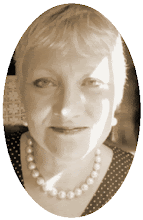The third stop on WhereDunnit's crime fiction tour of Sweden is the small fishing village of Fjällbacka, setting for Camilla Lackberg's first novel
The Ice Princess.

Although she is the author of six books featuring Inspector Patrik Hedstrom of the Tanumshede police and writer Erica Falck, only one has been translated into English so far, with another, The Preacher, due for release in February. Lackberg has been called Sweden's Agatha Christie, and while it is certainly true that The Ice Princess is a beautifully plotted whodunnit, the characterisation and description is far more rich and dense than this comparison implies.
What she does share with many of Christie's stories is the setting she has chosen for

her series: a self-contained community, where everyone tries to know everybody else's business, and secrets are hard to protect – but where keeping up appearances is vital. The community in
The Ice Princess is the coastal village of Fjällbacka, where Lackberg herself was born and lived as a child.
When author Erica Falck returns to her childhood home in Fjällbacka to tidy up loose ends after the sudden death of her parents, she discovers the frozen, dead body of a schoolfriend she hasn't seen for decades. Reluctantly at first, and with the help of local police inspector Patrik Hedstrom, she begins to unravel the threads of mysteries that have lain hidden at the heart of the community for many years.
The importance of the setting is emphasised by the inclusion of a map of Fjällbacka, and the descriptions of the landscape are both vivid and an integral part of the story. One of the subplots concerns tourists and incomers from Stockholm buying up traditional homes just to use in the summer for holidays.
The characters are deftly drawn: Erica is a sympathetic lead: despite her t

all blonde attractiveness – which would normally set me against her from the get-go - she is a little preoccupied about her weight, and, at thirty five and alone, worries about never having a partner or a child. The police squad are a cast of the usual suspects – the fiercely efficient secretary, the one coasting towards retirement, the suck-up – but my favourite is Police Chief Bertil Mellberg, with his paunch, his uncontrollable comb-over and his unshakable self-belief. Think Andy Dalziel without the charm or grace …. or skill.
Fjallbacka is about 90 miles north of Göteborg (Gothenburg) on the west coast of Sweden up near the border with Norway's coast. Although now primarily a tourist destination because of the picturesque aspect of the many original buildings, in the past it was a fishing village and it is this history which is important in
The Ice Princess.Fjällbacka means 'mountain hill' because the village is situated around the huge stone cliff of Vetteberget which is fractured by a fissure known as Kungsk

lyftan (King's Chasm/Cleft). The village is surrounded by an archipelago of lovely tiny islands, which also attracts many tourists – including, in the past, the famous movie actress Ingrid Bergman, who owned an island in the Fjallbacka archipelago and loved to go there each summer. At her request, after her death her ashes were scattered around Fjallbacka, and her statue was erected in the village square which was renamed in her honour.
 The hotel in the village, the Storla Hotellet Fjallbacka had mixed reviews on Tripadvisor, but most of the information available is of course in Swedish. There are more images here.
The hotel in the village, the Storla Hotellet Fjallbacka had mixed reviews on Tripadvisor, but most of the information available is of course in Swedish. There are more images here.The
Ice Princess and
The Preacher have been made into a successful series for Swedish television. Lackberg has commented: " I loved the Swedish TV-series and especially the casting, which was great. They did the two first books and the series had very high ratings when it aired in Sweden, so they will now film the next two books come this fall." There are DVDs but they are only available in Sweden and I do not know if they come with English subtitles (I know some of the Swedish Wallanders do). This website, though in Swedish, shows the
actors who play the main characters.
Last summer, Lackberg and Swedish chef published a cookery book called
Smaker from Fjällbacka (
Tastes from Fjällbacka), only available in Swedish. A review can be found
here.
Finally, one of the things I was surprised to note in passing when reading this book, which struck me again as I start reading Stieg Larsson's The Girls With The Dragon Tattoo (yes, I know I'm way behind on this) is that Sweden has a statute of limitations on homicide, so that after 25 years even first degree murderers cannot be prosecuted. In 2005 there was discussion of removing this limitation, as DNA and other trace evidence can now be recovered from very old cases, but as far as I can discover it has not been repealed yet.
View Larger Map












